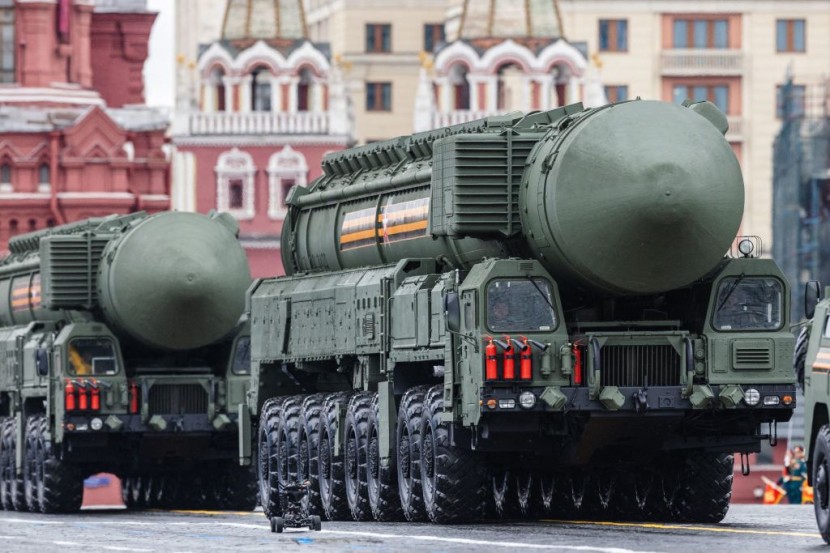
The S-500 is expected to be delivered to Russia's military first, but the surface-to-air missile system is already attracting export interest.
While Russia and China are not formally allies, when it comes to military weapons, they are collaborators. Even as China's domestic weaponry sector has grown, the country has remained to rely on Russia for aircraft engines and air defense equipment.
That collaboration is certain to continue. China and a few former Soviet republics may be among the first purchasers of the advanced S-500 anti-air missile system.
Russia opens advanced missile defense system to foreign customers
Almaz-Antey Air Defense Concern created the mobile surface-to-air missile/anti-ballistic missile system to replace the older A-135 missile systems now in service. The S-500 is a step up from the S-400 Triumf, however, it would complement rather than replace that platform, National Interest reported.
It has a range of roughly 600 kilometers and is said to be capable of destroying hypersonic cruise missiles and stealth aircraft. The S-500, according to analysts, might potentially target satellites in low-earth orbit.
Given China's continued assertiveness in the South China Sea, it's understandable that it would be interested in such a platform. The fact that possible foes China and India have both indicated interest in the S-500 "Triumfator-M" makes matters a bit more tricky.
India has been a long-time strategic partner of Russia. Tanks, small weapons, and planes built in Russia have long been used by New Delhi. INS Vikramaditya, the Indian Navy's current flagship, is a former Soviet aircraft cruiser that was sold to New Delhi in 2004.
Even though Russia seeks foreign customers for modern air defense systems, it may be some time before any of them are transferred. After the requisite number of S-500 surface-to-air missile systems are delivered to the Russian military, Russia is anticipated to begin selling the system. According to Reuters, Russia completed tests of the S-500 surface-to-air missile system in September and has begun providing it to the armed services.
3 Top methane emitters did not participate in to climate pledge
More than 100 nations have signed a pact to substantially reduce methane emissions, but the major three producers of greenhouse gas, China, India, and Russia, are not on the list.
The United States and the European Union lead the Global Methane Pledge, which was initially announced in September but officially introduced on Tuesday at the COP26 summit in Glasglow, Scotland. The project calls on countries to cut methane emissions by 30% by 2030 compared to 2020 levels.
Though the top three methane emitters have resisted, six of the world's top ten methane producers have signed the pledge: the United States, Brazil, Indonesia, Nigeria, Pakistan, and Mexico.
India, the world's third-largest carbon emitter, has vowed to achieve net-zero carbon emissions by 2070, according to statements made by India Prime Minister Narendra Modi at the summit on Monday. That date is two decades beyond the deadline set by COP26.
At the COP26 meeting, neither Russian President Vladimir Putin nor Chinese President Xi Jinping was present. Biden chastised the leaders for not attending and for not doing enough to combat climate change, as per Newsweek.
Related Article: Xi Jinping Fails To Lead at COP26 Climate Summit; Joe Biden Says It is a Big Mistake For China Not To Show Up
@YouTube








